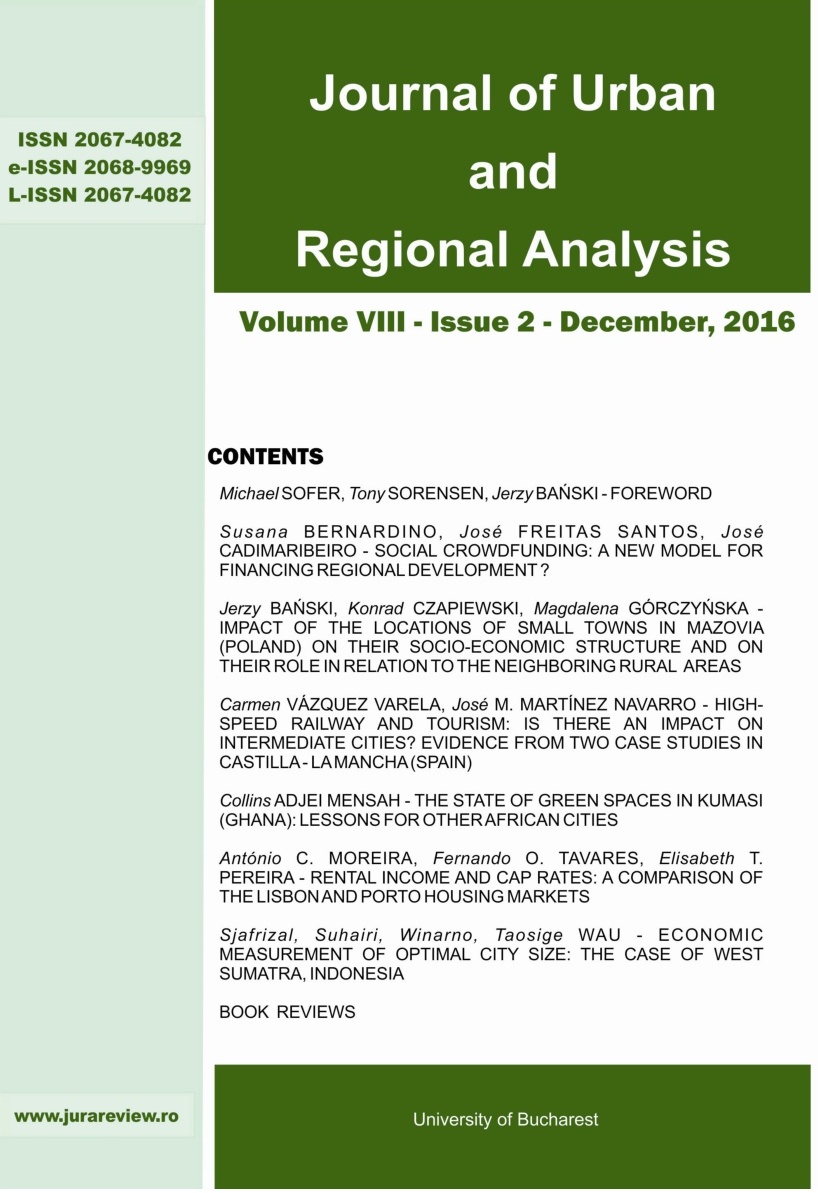IMPACT OF THE LOCATIONS OF SMALL TOWNS IN MAZOVIA (POLAND) ON THEIR SOCIO-ECONOMIC STRUCTURE AND ON THEIR ROLE IN RELATION TO THE NEIGHBORING RURAL AREAS
IMPACT OF THE LOCATIONS OF SMALL TOWNS IN MAZOVIA (POLAND) ON THEIR SOCIO-ECONOMIC STRUCTURE AND ON THEIR ROLE IN RELATION TO THE NEIGHBORING RURAL AREAS
Author(s): Jerzy Bański, Konrad Czapiewski, Magdalena GórczyńskaSubject(s): Rural and urban sociology, Economic development, Socio-Economic Research
Published by: Editura Universitară
Keywords: small towns; Mazovia; Poland; socio-economic structure; agglomeration; peripheries;
Summary/Abstract: This paper centers on the smallest towns (with populations below 10 000 inhabitants) in Mazovia region, Poland. What is mainly involved in the paper is an indicating of differences or regularities characterising the functional structures of small towns, and the roles they play in respect of the surrounding areas – in relation to their geographical location. The subjects of the detailed study were 10 localities in Mazovia: Serock, Radzymin, Ożarów Mazowiecki, Pilawa and Skaryszew – all located in the vicinity of a large agglomeration; and Łosice, Różan, Przysucha, Lipsko and Chorzele, in peripheral locations. Small peripheral towns have much more important functions to supply to the rural areas surrounding them than the agglomerated towns. Unfortunately, they are losing internal potential and they are characterised by unfavourable demographic processes. In turn, the small towns located within the wider surroundings of the agglomerations have been experiencing population growth.
Journal: Journal of Urban and Regional Analysis
- Issue Year: 8/2016
- Issue No: 2
- Page Range: 117-131
- Page Count: 15
- Language: English

